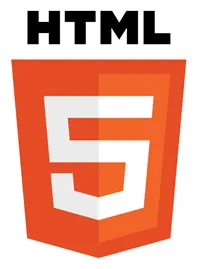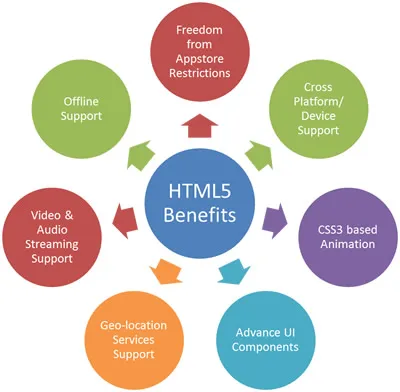‘HTML 5 is the latest version of HTML which is the core markup language of the World Wide Web that can be written in both HTML (HTML 5) and XML (XHTML 5) language.’
In this newest version of HTML, a number of APIs have been added such as Timed media playback, Canvas element, Offline storage database, Document editing, Drag-and-drop, Cross-document messaging, Browsing history management etc. that shapes the foundation of Web architecture.
Know some more about HTML 5
HTML 5 allows utilizing new structural elements and attributes, replacing some of the familiar elements. Moreover it’s providing some fresh functionality like audio and video elements which will offer an easy way to semantically structure the page.
‘HTML 5 is specially designed in order to meet the changing Web 2.0 world.’
This new markup language arrives with a simpler and classier way of exhibiting the web design for the website. At present the new CSS3 changes are not supported by all the though browsers like Firefox 3, Safari 4, Chrome 2, Opera 10, etc. are supporting the new design modifications.
Why HTML 5?
HTML 5 is developed to grant the developers a means to build up more flexible, powerful and efficient applications. It overcomes the lacking issues related to HTML 4 and brings in many new tags and enhancements for a broad range of features including form controls, APIs, multimedia, structure, database support and faster processing. Following are the new APIs included in HTML 5:

The Canvas element for immediate mode 2D drawing
- Offline storage database
- Geo-Location
- Document editing
- Drag-and-drop
- Cross-document messaging
- MIME type and protocol handler registration
- Browser history management
- Indexed hierarchical key-value store
- Microdata
- Local and Web SQL Database
- Timed media playback
- Indexed Database API
- Direct HTML Support for Drawing, Animation, Video and Audio
HTML 5 Benefits

Following are the benefits of HTML 5 making it more compatible than HTML 4:
Better Consistency
The new HTML 5 will provide a far better consistency in terms of HTML code which is used to design a web page thus making it easier to grasp the structuring of a web page for web designers and developers.
Cleaner Code
HTML 5 will allow developers to make use of a cleaner code. New structural elements like article tag and section tag are introduced replacing most div tags.
Client side database
HTML 5 will offer a new SQL-based database API to facilitate data storage locally i.e. client side. By using a real SQL database, a developer can save structured data on the client side. One can stock up the structured data temporarily as it’s not a permanent database. Even when the client is disconnected for a short time period, data can be accessed without any difficulty.
Enhanced Accessibility
HTML 5 new elements improve the accessibility by making it possible for assistive technologies to spread out the features offered by them to the users.
Geo-Location
Any HTML 5 compatible browser-based application can be directly used for finding out a location with the new HTML 5 geo-location APIs. The Google Latitude for the iPhone can be considered as a fine example of it.
Improved Semantics
The semantic values of all web pages will be improved due to the usage of new standardize elements of HTML 5 for coding a web page making it easy to notice various divisions of the web page such as headers, nav, footers, aside, etc.
Interactivity
The greatest benefit of HTML 5 is that the functionality is built into the browser. HTML 5 resolves the web application complexity issues with DOM and HTML support, for high-quality drawings, video & audio embedding, charts & animation and many other types of rich content required by users.
Sharper focus on Web application Requirements
HTML 5 is designed for making search front-ends easier to construct. Functionalities like real-time chat, drag & drop tools, discussion boards etc. are available with more efficiency.
Superior forms
New enhanced forms are introduced with up gradations in text inputs, search boxes and other fields providing better controls for data validation and interaction on the page.
Thread-like Operations
‘Web workers’ is a tool that enables faster thread-like processing with coordination using message-passing.
HTML 5 will free the multimedia content. It will be harder to differentiate between web applications and desktop applications and will surely be a step towards the future of internet.


















